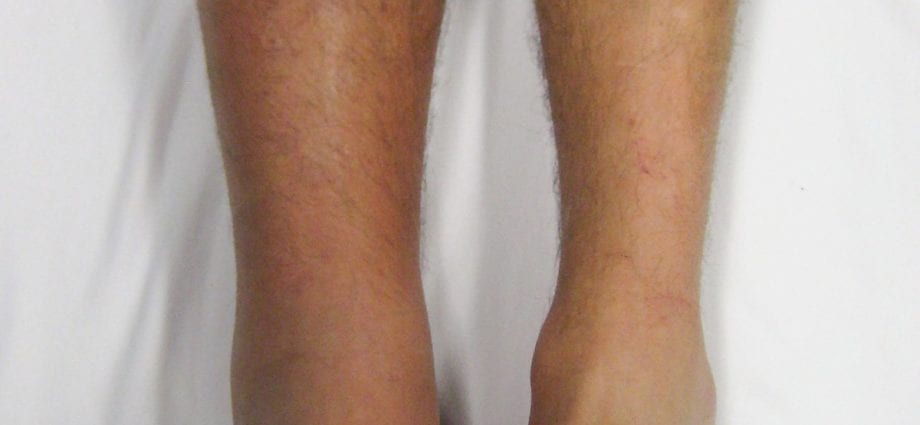Contents
General description of the disease
This is a pathological condition, during which the normal blood flow through the vessels is disrupted, due to which blood clots form – thrombi.
Reasons for the formation of thrombosis
A variety of factors can cause thrombosis. The blood flow is influenced, first of all, by its composition (hypercoagulation), which can change due to genetic pathologies or diseases of an autoimmune nature.
Blood flow is also disrupted due to damage to the endothelium (vascular wall), which can occur as a result of exposure to infections, injury or due to surgery.
Blood can also stagnate due to physical overstrain, a long stay in a motionless or sitting position, due to the presence of malignant formations (in particular, cancer of the lungs, stomach and pancreas).
The use of oral hormonal contraceptives can also trigger the development of thrombosis.
In addition, the development of clots provokes obesity, smoking, liver disease, free radicals, being at an altitude of more than 4200 meters, too late pregnancy, and poor nutrition.
Thrombosis symptoms
Thrombosis can manifest itself in different ways, it all depends on the location of the blood clot.
There is also an asymptomatic course of thrombosis. Thrombosis occurs without symptoms if a blood clot forms in the deep veins. In this case, edema appears under the superficial veins, the blood flow does not stop completely, it remains partial.
The main signs of thrombosis:
- 1 swelling of the affected area;
- 2 redness and cyanosis of the skin at the site of the appearance of the clot;
- 3 painful sensations when touching at the site of a blood clot;
- 4 swelling of superficial veins;
- 5 bursting pain in the area of blood clot formation.
Type of thrombosis
The type of thrombosis depends on the site of the thrombus. It is of two types. The first is venous thrombosis, and the second is arterial thrombosis (often, in addition to blood clots, atherosclerotic plaques also form, so often arterial thrombosis called atherothrombosis).
Useful foods for thrombosis
For thrombosis, it is best to follow a vegetarian diet and eat foods that thin the blood. Such properties are possessed by seafood, fish oil and fish (they contain Omega-3 and 6), vitamin E (cashews, sea buckthorn, sprouted wheat, dried apricots, spinach, oatmeal, barley groats, prunes, spinach), pumpkin and sunflower seeds, flaxseed oil, ginger, lemon, cranberry, honey, ginkgo biloba, avocado. It is very useful to drink freshly squeezed vegetable juices. If there are no contraindications, you can use a small amount of dry wine (always of high quality).
With venous thrombosis, it is allowed to add vinegar (especially apple cider), pepper, horseradish, onion, garlic to food.
It is worth remembering that nutrition should be adjusted depending on the medications taken. Therefore, before starting a diet, you should consult your doctor.
Traditional medicine for thrombosis
Thrombosis can be treated with traditional medicine using various methods: alcohol tinctures, foot baths, herbal medicine, and the use of honey.
- Alcohol tinctures use both inside and for rubbing.
White acacia tincture works well for compresses and rubbing. For its preparation, 2 tablespoons of flowers and 200 milliliters of alcohol are taken. You need to insist in a warm and dark place for 10 days.
For oral administration, a tincture made from the roots of white cinquefoil is well suited. The roots are pre-washed and dried. Then 100 grams of roots must be poured with a liter of vodka and left to infuse in a dark corner for 21 days. It is imperative to insist in a glass jar, tightly closed with a lid. At the end of the period, the tincture is filtered. Receiving tincture: 3 times a day, one teaspoon.
- Relieve pain and swelling will help foot baths with the addition of a decoction of tanning root, white willow bark or oak bark. Such baths must be done before going to bed and preferably in a bucket (it is advisable to soar the legs to the knees). After taking the bath, you should wrap your legs with an elastic bandage or put on compression stockings.
- With thrombosis, blood thinning will help broths from nettle, sweet clover, yarrow, immortelle, buckthorn, lingonberry and birch leaves, sage, elecampane root, peppermint.
- Honey will help to get rid of not only thrombosis, but also improve the general condition of the body. For the treatment of thrombosis, 2 prescriptions are used.
To prepare the first remedy, you will need a glass of honey and onion juice. These juices need to be mixed and infused for three days in a warm place, and then stored in the refrigerator for a week. This mixture should be consumed on a table bed before meals (it is allowed to eat no more than 3 tablespoons a day).
To prepare the second recipe, take 3 apples, place them in a saucepan and pour in freshly boiled water. Cover tightly with a lid and wrap the vessel in a blanket, leave in this form for 4 hours. After this time, apples are pounded together with water, squeezed juice through cheesecloth. This juice is drunk a day, while a teaspoon of honey is eaten before use.
Dangerous and harmful foods for thrombosis
- food containing vitamins of groups C and K (rose hips, tomatoes, sorrel, currants, lettuce, all citrus fruits, cabbage, liver);
- nuts (except cashews);
- all fatty, smoked, overly salty and sweet foods;
- alcohol;
- food from fast food restaurants;
- semi-finished products;
- foods containing trans fats and cholesterol.
These products affect the viscosity of the blood and impair its blood flow, as well as contribute to the appearance of congestion, and then provoke the formation of blood clots.
Attention!
The administration is not responsible for any attempt to use the information provided, and does not guarantee that it will not harm you personally. The materials cannot be used to prescribe treatment and make a diagnosis. Always consult your specialist doctor!










